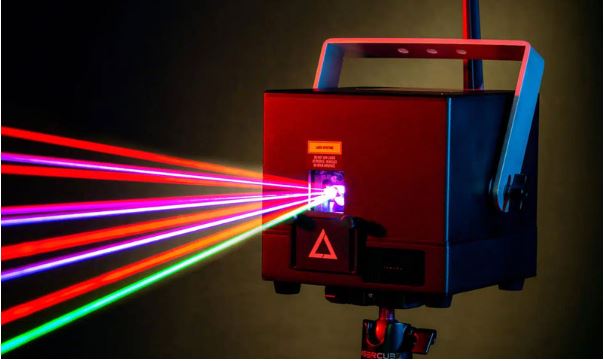
The Different Types of Laser Lights & Use Cases | LaserCube
Laser light is a unique type of bright light that travels in a narrow beam. Different types of lasers use various materials to create a unique light. This light can be used in various applications, ranging from industrial cutting to creative light shows with devices like the LaserCube.
This article will explain what the different types of laser light are, by covering the main categories, such as solid-state and gas. It will explain how their distinct properties make them useful in medicine, manufacturing, and entertainment; all to help to highlight why lasers are such a valuable tool today.
Major Types of Laser Light
Lasers are mainly categorized by the material used as their “gain medium.” This core component determines the laser’s wavelength, power, and use case for the laser. The primary types of lasers include solid-state, gas, dye, and semiconductor lasers.
Solid-State Lasers
Solid-state lasers use a solid material as the gain medium. A classic example is the neodymium-doped yttrium aluminum garnet (Nd:YAG) laser, which uses a crystal. This category also includes modern semiconductor diode lasers, and advancements in this area have made it possible to create compact systems like the LaserCube for a wide range of creative applications, such as Laser Shows.
Gas Lasers
The process of generating light in gas lasers involves passing an electric current through a gas mixture. Common examples in todays environment are helium-neon (He-Ne) and argon lasers.
Argon lasers, producing blue or green light, were traditionally used in large-scale light shows – however, they’re often bulky and need specific upkeep. On the other hand, today’s solid-state systems easily produce bright, full-color displays.
Dye Lasers
Organic dyes dissolved in liquid serve as the active medium in dye lasers. A wide color tuning range makes them important tools in specialized research and medical fields. Their operational complexity, however, typically confines them to specialized labs.
Semiconductor and Fiber Lasers
Semiconductor lasers, often called laser diodes, are a compact and efficient type of solid-state laser. Using materials like gallium arsenide, they are electrically powered and are now common in everything from telecommunications to barcode readers. This efficiency and small size are exactly what allow products like the LaserCube to deliver powerful laser projections from a handheld device.
Applications and Properties of Laser Light
The unique coherence and focused beam of laser light make it a versatile tool in many fields.
Key Physical Characteristics of Laser Light
Laser beams have highly synchronized light waves, making them highly coherent. This creates a tight beam of light that shows minimal spread over distance. Many lasers emit only one wavelength of light, making them perfect for precise work.
Industrial and Scientific Uses
In industrial settings, lasers are used for cutting, welding, and engraving materials with high accuracy. In science, they contribute to research through spectroscopy, which analyzes materials, and holography, which creates three-dimensional images.
Medical and Everyday Applications
Lasers are widely used in medicine for precise surgeries and skin treatments. In daily life, laser pointers, barcode readers, and laser printers all rely on this technology to improve speed and accuracy.
Laser Light in Communication and Entertainment
Telecommunication systems use lasers to send data quickly over fiber optic cables. In entertainment, laser light shows create vivid visual displays. Modern diode laser systems, like those used in the LaserCube, have made this technology accessible to DJs, artists, and hobbyists, allowing them to produce impressive light shows for various events.

LaserCube: Your Go To Laser Light System
Though lasers are often used in industry and science, advances in solid-state laser diodes have made them more accessible. The LaserCube puts these advancements into a compact, user-friendly device.
Artists, DJs, and hobbyists can use it to create custom laser shows and projections. This also allows for light engraving on materials like wood and leather, adding a creative element to typical laser uses. If you’re looking to add unique visuals to your next project, the LaserCube offers a straightforward and versatile option.
Frequently Asked Questions (FAQs)
What are the characteristics of different laser light sources in physics?
How do the various types of laser systems benefit different skin treatments?
What are examples of lasers commonly used in medical applications?
What is the distinction between continuous wave and pulsed lasers?
Can you list the most common laser wavelengths used in hair removal treatments?